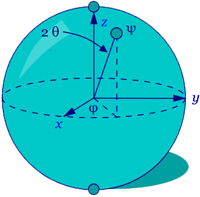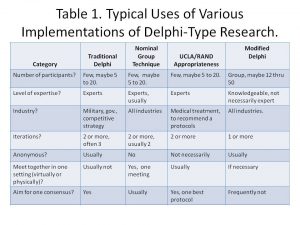Here are Scenarios and sources of the injustice in the Criminal Justice system in the USA.
The US has the most people incarcerated of any country in the world… Even though we only have 4.3% of the world’s population, we have more inmates — 2.2 million — than China (1.5m) and India (0.3m), combined (36.4% of world population)! We have 23% of China’s population but 40% more incarcerated. We have almost 1% of our population (0.737%) incarcerated! We have 6 times higher incarceration rate than China, 12 times higher that Japan, and 24 times the rates in India and Nigeria. That’s right, an American has a 1,200% greater chance of being incarcerated than a Japanese citizen. We have even a 20% higher incarceration rate than Russia with 0.615% of their population in (Siberian) prisons and jails.
I know what you’re thinking, Americans must be more criminally inclined than any other country in the universe. And, no, it is not those *bleeping* Mexicans. The evidence shows that the Mexicans (legal or otherwise) cause less crimes than the typical “American”, plus crimes involving illegal Mexicans are far more likely to go unreported.
So now, I’m at a loss. Where did the criminal genes come from? You can’t really blame the American Indians.
Some of the ugly mechanisms and profits in the prison system are summarized nicely here in ATTN by Ashley Nicole Black, Who Profits from Prisons (Feb, 2015).
“There are currently [2.2 million] American in prisons. This number has grown by 500 percent in the past 30 years. While the United States has only [4.3] percent of the world’s population, it holds 25 percent of the world’s total prisoners. In 2012, one in every 108 adults was in prison or in jail, and one in 28 children in the U.S. had a parent behind bars.”
For years I heard stats that half of the people in prison in the USA were for non-violent (no weapon) drug offenses. That’s insane. It seems like the wrong people are institutionalized here. With the legalization of marijuana in many states these incarceration rates should be reducing (improving). July 2018 shows 46% of US inmates are for drug offenses: https://www.bop.gov/about/statistics/statistics_inmate_offenses.jsp
Okay, so what does that have to do with scenarios and scenario planning? What would be some of the scenarios that might lead to something more sane in terms of our incarceration rates. One approach would be to focus on those deflection points that might result in a lower level of criminals (criminal activity). Just one would be a new approach related to the prohibition of marijuana. As we learned from alcohol, prohibition doesn’t work. But there are several other ways to provide a mechanism for less criminal activity and/or less people incarcerated and/or less people incarcerated for so long. We’ll talk about two of our favorites at a later time: education and community engagement/involvement. (The Broken Window concept of fixing up the community and more local engagement is very intriguing. See article by Eric Klinenberg here.)
The big thing that escalated US incarceration rates was a get-tough-on-crime movement that began during the Nixon “I’m-not-a-crook” era. Part of this was obviously to have some tools to go after the hippies and the protesters. Tough on crime with mandatory sentences, lots of drug laws, and 3-strike laws came into being. Not to be outdone, as the toughest on crime, the 3-strikes moved to 2-strikes to, essentially 1-stike. As we filled up the prisons, we had to build more.
One current trend that should increase incarceration is the current epidemic of opioid-ish drug overdoses. Most forces, however, seem to be pushing toward reductions in incarceration.
Various scenarios should lead to a significant reduction in incarceration rates. The resulting scenario of low incarceration should have several ramifications. If you are in the business of incarceration, then business should – ideally – get worse and worse. Geo and Corrections Corp of America (now CoreCivic) should expect their business to drop off precipitously. Plus, there seem to be several movements away from private (or publicly traded) companies back toward government run prisons because private has been shown to be less effective — even if cheaper on the inmate-year bases.
Here’s a discussion of the business of incarceration. Note that the “costs” of incarceration are far, far more than the $50,000+/- it costs per year per inmate. Plus, having more people as productive members of society has them working (income and GDP) and paying taxes, not a dead weight on society.
Do you think that the relaxation of marijuana laws might be a “Sign Post” (in scenario terms) that indicates a rapid drop in prison population? Also, super full employment, might be a solution all by itself. People, especially kids, who can get jobs and do something more productive, may be less inclined to get into drugs and mischief? There’s no reason why the Sign Post need to be only one, or even two signs. In fact, the crime system is just a sub-system of an economy. Multiple reinforcing systems can be really powerful.
If we do take other approaches to the incarceration system, what would those approaches be? And who (what businesses/industries) would benefit most?
What do you think? Is it time to get out of the criminal (in)justice system?
Resources
Half of the world’s incarcerated are in the US, China and Russia: http://news.bbc.co.uk/2/shared/spl/hi/uk/06/prisons/html/nn2page1.stm
Incarceration Rates: https://www.prisonpolicy.org/global/2018.html
US Against the world: https://www.statista.com/statistics/300986/incarceration-rates-in-oecd-countries/
New Yorker Article in Sept 2016 by Eric Markowitz, Making Profits on the Captive Prison Market.
How for-profit prisons have become the biggest lobby no one is talking about, by Michael Cohen in 2015.
Follow the money, in 2017, with a great infographic as to where all the prison moneys go.


